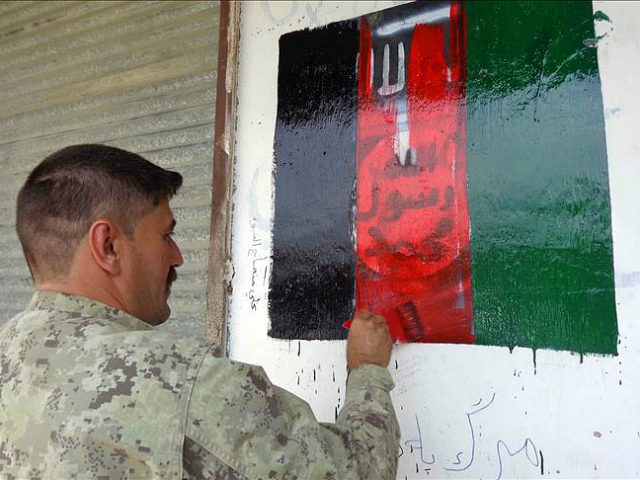Afghan National Defense and Security Forces (ANDSF) have dramatically reduced the number of Islamic State (ISIS/ISIL) jihadists in Afghanistan by nearly 80 percent, from a peak of nearly 3,000 a year ago to about 700 now, according to the American military.
Brig. Gen. Charles Cleveland, the Kabul-based spokesman for the U.S.-NATO mission in Afghanistan who provided the latest estimate of 700 ISIS fighters, told Pentagon reporters in October 2016 that, at the time, the number of ISIS jihadists substantially decreased to 1,000 fighters.
That means about 300 Islamic State terrorists have been killed between mid-October and now.
“They were occupying almost 11 districts in that area, and they were bringing all sorts of pain and pressure to the people of southern Nangarhar,” Gen. Cleveland told reporters in Kabul on Wednesday, according to Voice of America (VOA).
“We believe that there are approximately 700 members of ISIS, perhaps even less now based on the operations, that are still contained to less than three districts down in southern Nangarhar,” he added.
However, Al Jazeera has learned from some officials within the Afghan government that the estimated number of ISIS fighters in Afghanistan stands at “around 1,500, with twice as many auxiliary helpers and up to 8,000 less active supporters.”
Moreover, Afghan officials and members of the jihadist group have also said that the ISIS offshoot in the Afghanistan-Pakistan region, dubbed the Khorasan Province (IS-K/ISIL-KP) “is expanding to new areas, recruiting fighters and widening the reach of attacks in the region.”
As the Islamic State loses territory in their ever-shrinking caliphate in Iraq and Syria, IS-K is making an effort to establish its own “caliphate” on Afghan soil, declared Gen. John Nicholson, the top commander of U.S. and NATO forces in Afghanistan.
Last month, IS-K successfully carried out its at least second major attack in the Afghan capital of Kabul, killing at least 20 and injuring dozens more.
Afghan authorities also blamed the IS-K jihadists last month for killing six local employees of the International Committee of the Red Cross (ICRC) and kidnapping two others in the northern part of the country, far away from their regional stronghold in the opium-rich eastern Afghan province of Nangarhar along the country’s border with Pakistan.
Despite the deadly attack in northern Afghanistan, Gen. Cleveland, the U.S. military spokesman, stressed that IS-K jihadists “are primarily active in Nangarhar and nearby districts of neighboring Kunar province, but he denied the existence of the terrorist outfit in northern Afghan regions, citing intelligence gathered by the U.S. military.”
IS-K is also responsible for a recent massive suicide bombing on a prominent Sufi Muslim shrine in Pakistan that killed up to 88 people, including women and children, and wounded more than 300 others.
Attacks in Pakistan are believed to be carried out by IS-K jihadists across the border in the group’s stronghold in the Afghan province of Nangarhar.
Gen. Nicholson has noted that the majority of IS-K jihadists are Pakistani Pashtuns, members of the Pakistani Taliban, Tehrik-e-Taliban Pakistan (TTP), adding that Uzbeks from the Islamic Movement of Uzbekistan have also traveled to Afghanistan to join the group.
On Wednesday, Gen. Cleveland lambasted Russia and its ally Iran for their collaboration with the Afghan Taliban that has killed thousands of American service members.
In justifying their relationship with the Taliban, Moscow and Tehran argue that IS-KP jihadist group poses a threat to them.
“Our view is that any engagement with the Taliban by external actors is ultimately going to be counterproductive and it is going to undermine the legitimate efforts of the government of Afghanistan,” warned Cleveland.
IS-K established its presence in Afghanistan in January 2015, less than a month after former President Barack Obama declared an end to the combat mission, a move that was preceded by a dramatic withdrawal of U.S troops.
Under the President Donald Trump, the U.S. military is expected to request more U.S. forces for Afghanistan.

COMMENTS
Please let us know if you're having issues with commenting.